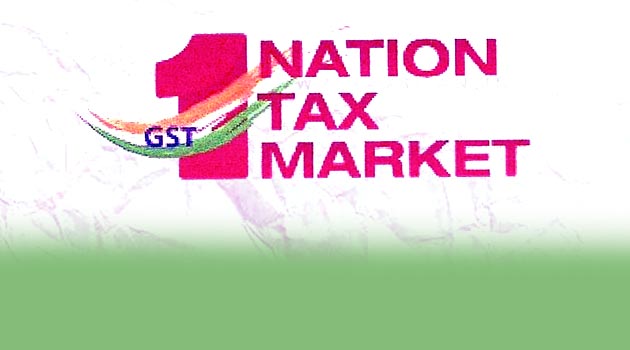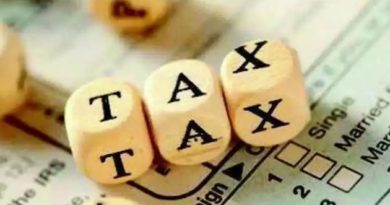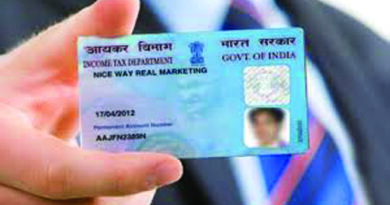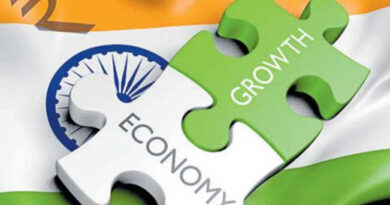GST Slogan ‘One Nation, One Tax, One Market’ – Is it Suitable?
Abstract
Economic development of a country depends up on the efficient utilisation of available resources, which needs right infrastructure. Providing right infrastructure is the responsibility of governments and they need funds. Funds are mobilized through the collection of direct and indirect taxes. Indirect taxes are basically the taxes which are not directly levied on the income of individuals or business houses but it is indirectly levied on the people who spend on buying goods and services. Indirect tax structure has been improved over years, yet suffering from various problems like cascading effect; double taxation; plethora of definitions and various classifications; administrative difficulties; narrow base; regressive are a few. To avoid such problems central government introduced Goods and Services Tax (GST) in the month of July 2017. The paper aims to study the problems of indirect taxes prior to implementation of GST, features and benefits of GST. Further to study suitability and relevance of the slogan ‘One Nation, One Tax, One market’ given by the central government.
Economic development of a country depends on the availability of various resources and their effective utilisation. Financial resources are very crucial when compared to other sources. Financial resources come from the collection of tax. Government collects tax to provide infrastructure facilities and public services. Infrastructure is the basic physical systems of a nation. It includes transportation, communication, water, electric, hospitals, educational institutions, housing and sewage systems. Developed infrastructure is vital for a country’s economic development and prosperity, since industrial development depends on infrastructure. Providing infrastructure is high-cost investments. Projects related to infrastructure improvements may be funded publicly, privately or through public-private partnerships. Therefore, central and state governments impose tax and collects tax on individuals and business houses.
Governments can raise funds from imposing and collecting taxes; dividends from public sector units (PSUs); grants and borrowings of the government like the market loans, short term borrowings, external commercial receipts. A tax is a mandatory financial charge or some other type of levy imposed upon an individual or business house by a governmental in order to fund various infrastructure and public services. In other words, Taxes are levied by governments on their citizens to generate income for undertaking projects to boost the economy of the country and to raise the standard of living of its citizens. There are two types of taxes – direct and indirect taxes. Besides these two conventional taxes, there are also other taxes are levied on both direct and indirect taxes such as the recently introduced Swachh Bharat Cess tax, Krishi Kalyan Cess tax, and infrastructure Cess tax among others. The authority of levy and collection of tax by governments is derived from the Constitution of India. All taxes levied within India need to be backed by an accompanying law passed by the Parliament or the State Legislature.
Indirect Tax
Indirect taxes are basically the taxes which are not directly levied on the income of individuals or business houses but it is indirectly levied on the people who spend on buying goods and services. Put in simple words, indirect tax is a tax collected by an intermediary (such as a retail store) from the person who bears the ultimate economic burden of the tax (such as the consumer). Service tax, excise duty, value added tax, customs duty, securities transaction tax, stamp duty, entertainment tax are the a few examples of indirect taxes.
Indirect tax structure has been improved over years, yet suffering various problems. Cascading effect; double taxation; plethora of definitions and various classifications; administrative difficulties; narrow base; regressive are a few. To avoid the problems central government introduced Goods and Services Tax (GST)
Goods and Services Tax
Goods and Services Tax (GST) is an indirect tax which was introduced in India on 1 July 2017. This is a historical move, as it marked a significant indirect tax reform in the country. The main features of GST system are as follows:
- GST would be applicable on Supply: GST would be applicable on “supply” of goods or services as against the present concept of tax on the manufacture of goods or on sale of goods or on provision of services.
- Destination-Based Consumption Tax: GST will be a destination-based tax. This implies that all SGST collected will ordinarily accrue to the State where the consumer of the goods or services sold resides.
- Five Tax Rates: The tax rates under GST are set at 0%, 5%, 12%, 18% and 28% for various goods and services.
- GST will subsume the State Taxes: Central Sales Tax, Entry Tax, State VAT, Luxury Tax, Purchase Tax, Entertainment Tax, Taxes on lotteries and gambling, Taxes on advertisements, and State cesses and surcharges
- Computation of GST on the basis of invoice credit method: The liability under the GST will be invoice credit method i.e. cenvat credit will be allowed on the basis of invoice issued by the suppliers.
- Dual Goods and Service Tax (CGST and SGST): The CGST and SGST are to be paid to the accounts of the central and states respectively.
- Inter-State Transactions and the IGST Mechanism: The Centre would levy and collect the Integrated Goods and Services Tax (IGST) on all inter-State supply of goods and services. The IGST mechanism has been designed to ensure seamless flow of input tax credit from one State to another.
- GST on Imports: Centre will levy IGST on inter-State supply of goods and services. Import of goods will be subject to basic customs duty and IGST.
- Exemption of Small Tax Payers: Taxpayers with an annual turnover of Rs. 20 lakh (Rs. 10 lakh for special category States (except J&K) as specified in article 279A of the Constitution) would be exempt from GST.
- Refund of Tax: Refund of tax to be sought by taxpayer or by any other person who has borne the incidence of tax within two years from the relevant date.
- Self-assessment: System of self-assessment of the taxes payable by the registered person
Benefits of GST
GST system will help create a common national market; boosts foreign investment; removes cascading effect of taxation; leads to uniformity in laws, rates of tax, and procedures across states; expected to boost manufacturing activities and exports; generate more employment; Indian products would be more competitive in the international markets; likely to improve the overall investment climate in India; uniformity in the rates of SGST and IGST; will reduce tax evasion to a large extent; simpler system of taxation with smaller number of exemptions; automated and simplified methods for processes such as registration, refunds, returns, tax payments; input tax credit process will be more accurate and transparent, as electronic matching will be performed. These are the key benefits of GST. GST benefits Business and Industry – Easy compliance, uniformity of tax rates and structures, removal of cascading, improved competitiveness, and gain to manufacturers and exporters. Central and State Governments- simple and easy to administer, better controls on leakage, and higher revenue efficiency. Consumer – single and transparent tax proportionate to the value of goods and services, and relief in overall tax burden. Put in simple, GST will benefit all stakeholders.
GST Slogan is it Suitable?
- One Nation: The Constitution of India gives a federal structure to the Republic of India, declaring it to be a “Union of States”. India as a federal union comprising 30 and six union territories,Part XI of the Indian constitution specifies the distribution of legislative, administrative and executive powers between the Union, also known as the Central government, and the States of India. GST excludes some states. Then how to call ‘One Nation’ in the GST slogan?
- One Tax: Applicability of GST is not for all products and services. Petroleum products including petrol, diesel, natural gas, kerosene, crude oil, fuel, etc., have been kept outside of GST cover, as of now. In the present scenario, three different taxes are being levied on the petrol prices – VAT, Excise duty, and the commission of dealers. Therefore, we cannot call it ‘One Tax’
- One Rate: The GST is governed by a GST Council and its Chairman is the Finance Minister of India. Under GST, goods and services are taxed at 0%, 5%, 12% ,18% and 28%. There is a special rate of 25%on rough precious and semi-precious stones and 3% on gold. Then how do we call it as ‘One Rate’?
- One Market: GST is not applicable to whole of India on 1 July 2017; some products kept out of the GST; existence of various taxes and various rates would mean more markets. Therefore, ‘One Market’ may not be right.
- Destination based tax / Place of Supply: Destination Based taxis the name suggests is the taxation based on destination or consumption of the goods or services. Origin based tax is levied where goods or services are produced not where consumed. If A in Gujarat produces the goods and sells the goods to B in Rajasthan, then in such case the tax should be levied and collected and should accrue on the goods in the State of Rajasthan and not in the State of Gujarat. If A in Gujarat produces the goods and sells the goods to B in Rajasthan, then in such case the tax should be levied and collected in the State of Gujarat and not in the State of Rajasthan. This may lead to disputes between states in future.
Conclusion
Introduction of Goods and Services Tax (GST) is an indirect tax in India on 1 July 2017 is a historical move and it is marked a significant indirect tax reform in the country. GST introduced with the expectation of that, the GST tax system will help create a common national market; removes cascading effect of taxation; leads to uniformity in laws, rates of tax, and procedures across states; boost manufacturing activities and exports; generate more employment; Indian products would be more competitive in global markets; likely to improve the overall investment climate in India and attract foreign investment; reduce tax evasion; simpler system of taxation with smaller number of exemptions; automated and simplified methods for processes such as registration, refunds, returns, tax payments; input tax credit process will be more accurate and transparent, as electronic matching will be performed. On an overall many economists and experts predict that the GST bill will boost up the economy in long-run.
About the author
Dr.G.Sudarsana Reddy
Professor, Dept. of Commerce, Tumkur University
B,H,Road, Tumakuru – 572103. Karnataka




